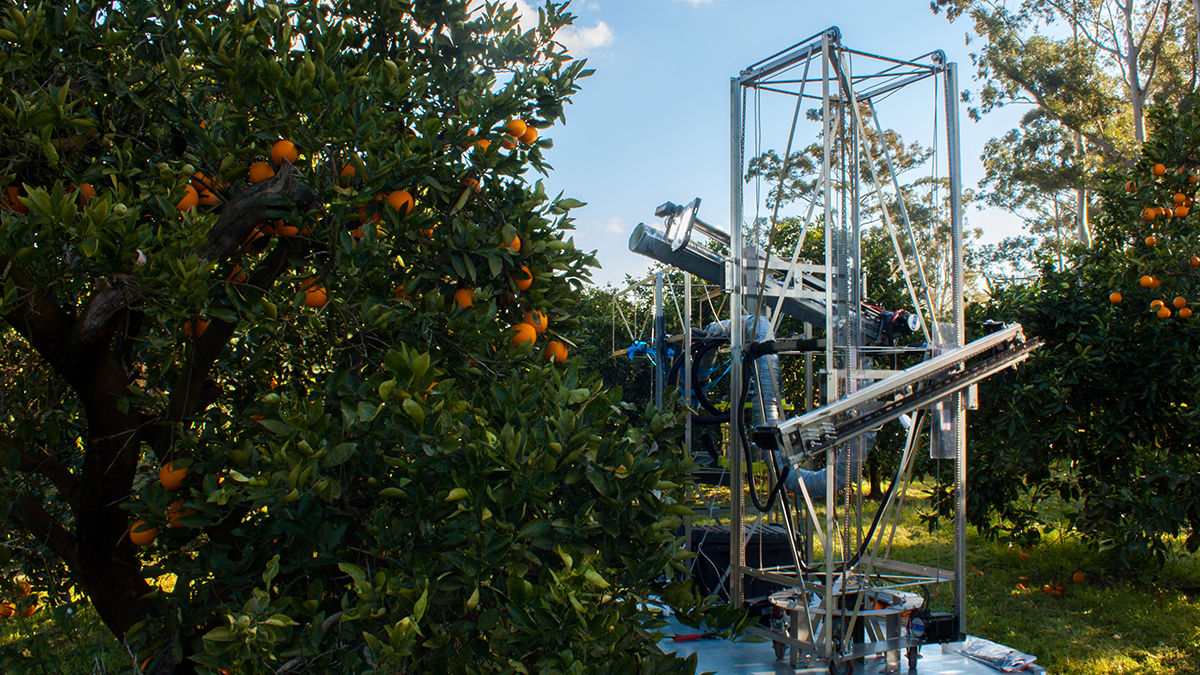Quitting your job and following your passion is more common on theatre screens than in real life, however it’s exactly what happened with the fruit-picking robotics company Ripe Robotics.
“I am a massive risk taker so I was quite happy to quit my job and put all my money into this,” said Hunter Jay, founder and CEO of Ripe Robotics.
However Ripe Robotics wasn’t founded on a whim.
An analysis of Australia’s strongest industries, the problems that existed in them and the existing solutions led Mr Jay to found Ripe Robotics.
“I’d been doing a lot with machine learning and working in AI. We started looking for the biggest application of machine learning and AI in Australia and where there weren’t any big players that could jump in and solve the problem,” said Mr Jay.
“So we were looking at agriculture and mining. Within agriculture, you could automate 90 per cent or more of simple manual tasks that people still do on orchards. You could also make it better because we wouldn’t be losing fruit from damage or leaving it unpicked.”
In addition to a strong agriculture industry, Mr Jay has found that Australia’s thriving deep tech industry helped his company achieve recognition rapidly.
“We’ve had a lot of encouragement. People are always excited to hear about what we’re doing with robotics.
“I think Australia is pretty supportive of deep tech, which is fantastic.”
However a supportive environment hasn’t been the only thing keeping Ripe Robotics alive.
Constantly iterating and improving their fruit-picking machine has been one of the biggest challenges for the company.
For instance, designs that function in the lab have at times not worked on real fruit in orchards.
“You’ve got to be able to work stuff out without knowing anything beforehand. We had no idea how to pick fruit so we had to go through lots of iterations on how to snap fruit off trees.
“We were asking: what is the issue and why isn’t it coming off the way we want it to. You have to be able to do those experiments.”
Mr Jay noted that the ability to keep building and improving on designs is key to success in the robotics industry.
“A pitfall that people who do robotics projects fall into is that once you think you have proof of concept you can build a million and that’s it. But you need to work out how to scale at the same time as you’re doing the design.
“It’s not software where you build and make millions of copies. You have to ask: is this design going to be easy to manufacture? Otherwise you go down a path where you’ve got an awesome proof of concept but no idea how to commercialise it.
“You have to think from the start is this going to be feasible to manufacture and maintain when it’s running in the field, rather than just one proof of concept.”
Whilst still in its early stage, Mr Jay knows that his company will be able to grow quickly.
“Our plan is first the commercial viability of the machine – for example, can we run it all day, can it pick enough fruit, is it doing it fast enough, is it making money rather than losing it.
“Once we’ve proven all that, we’ll be ready to scale up really quickly.”
Keep up to date with our stories on LinkedIn, Twitter, Facebook and Instagram.

